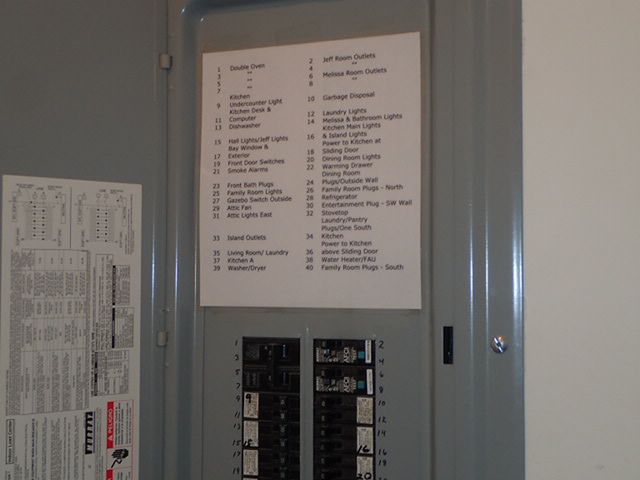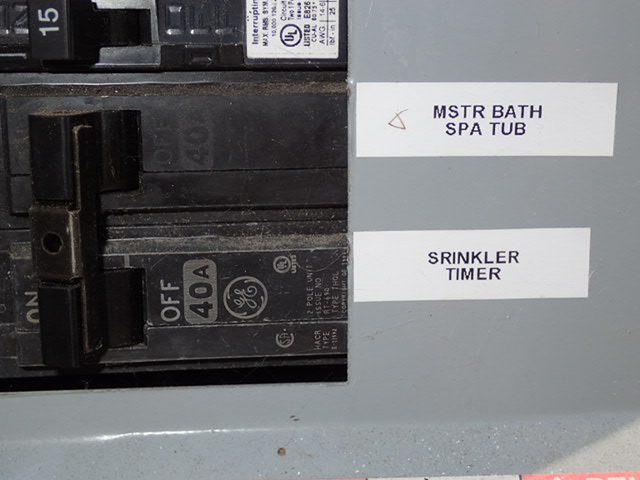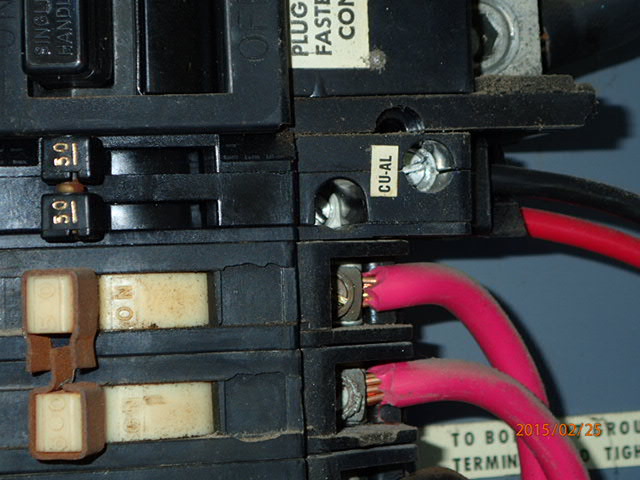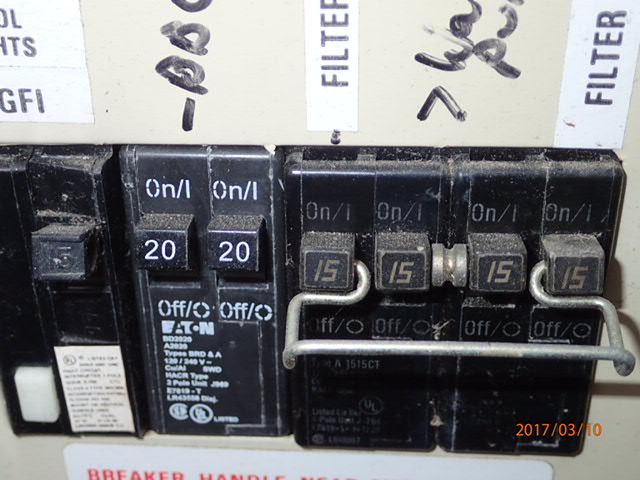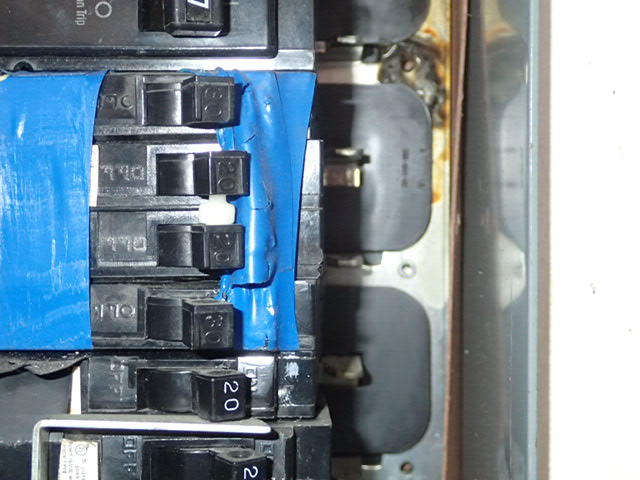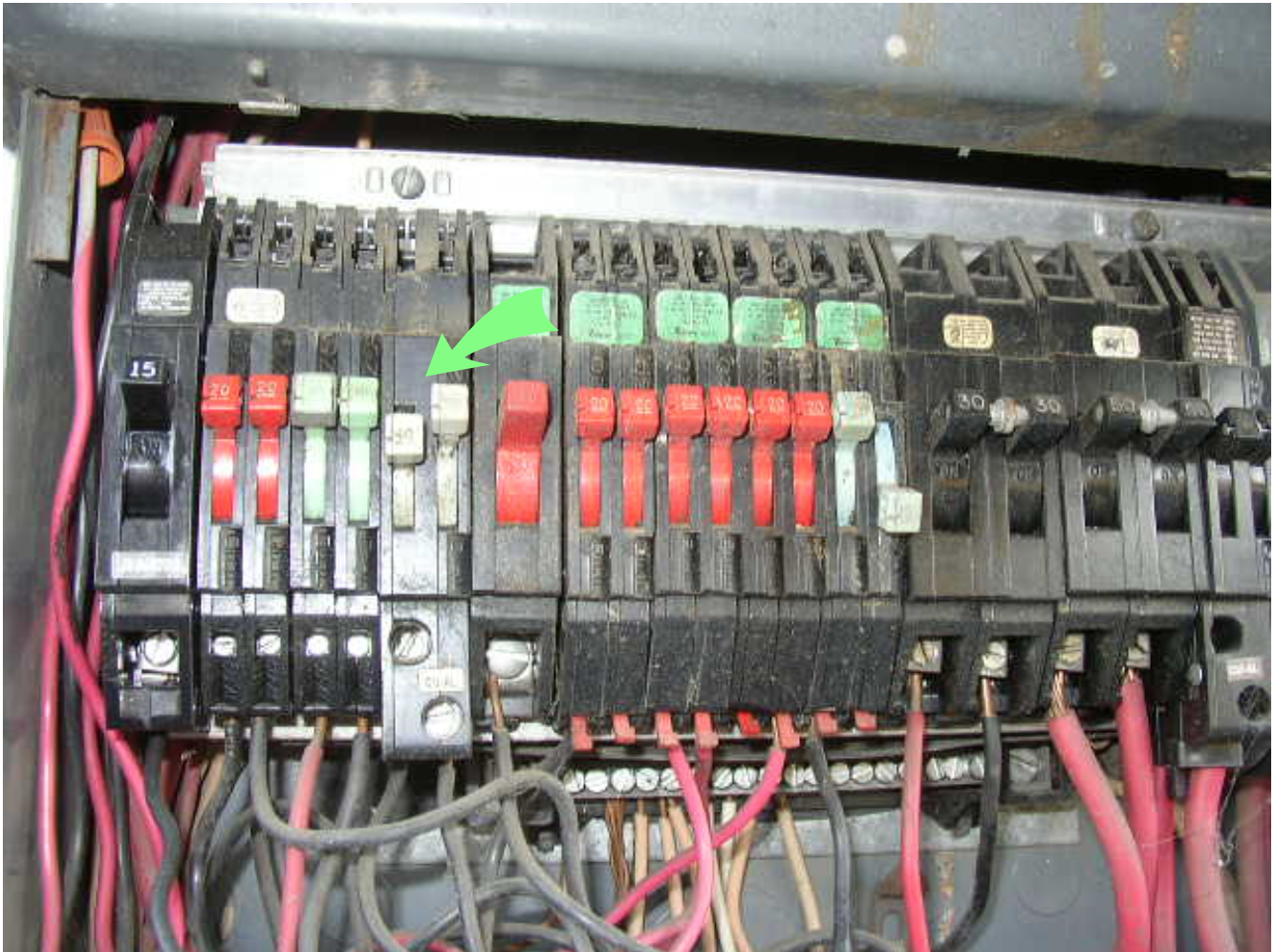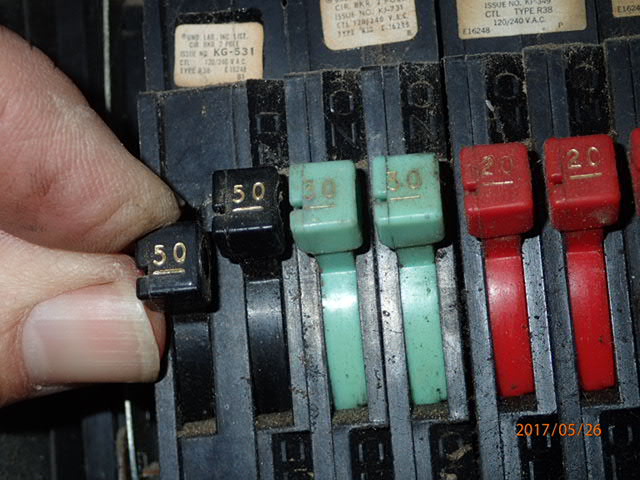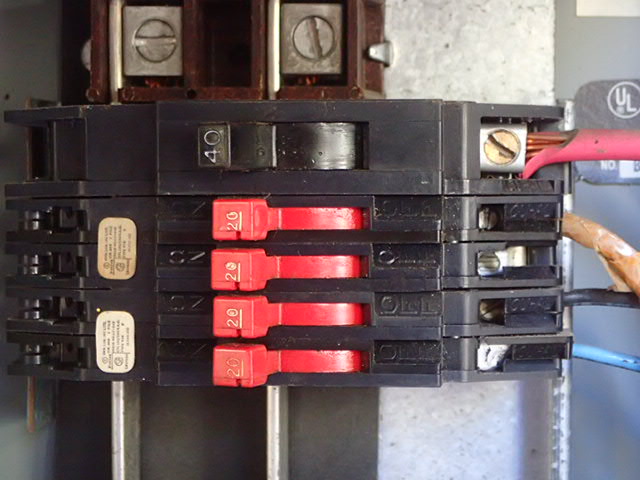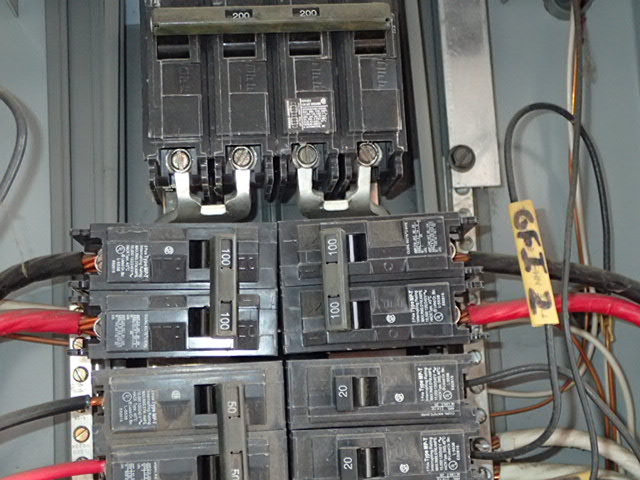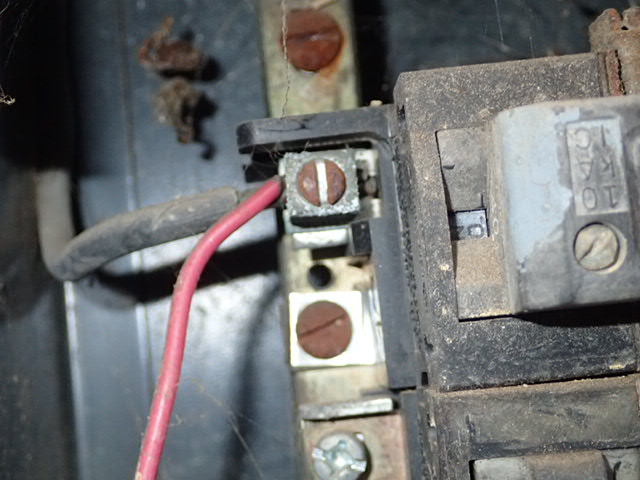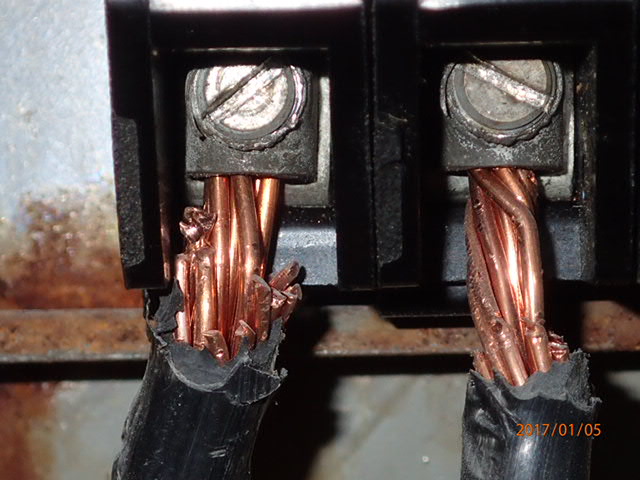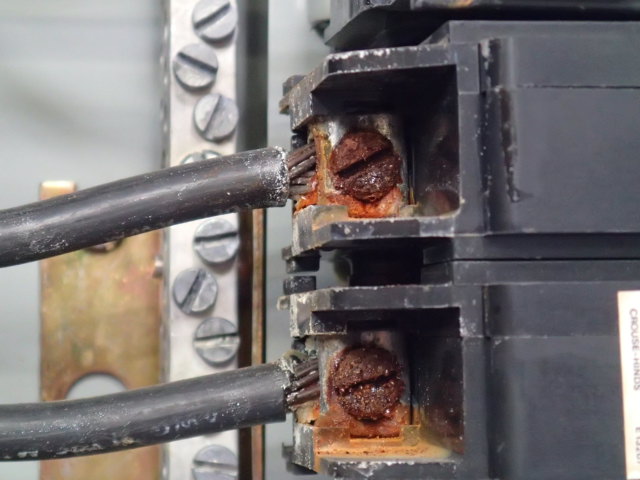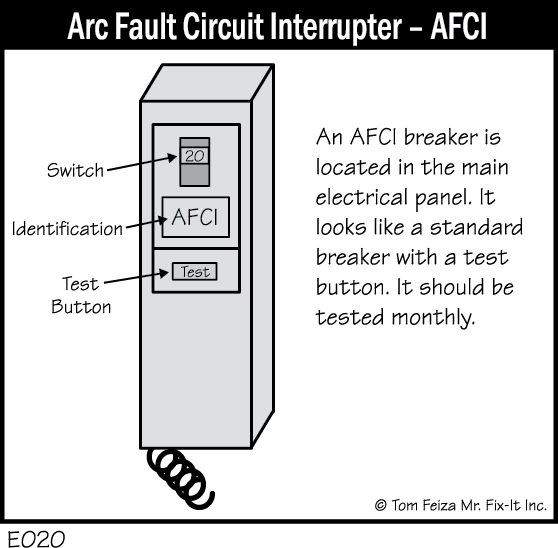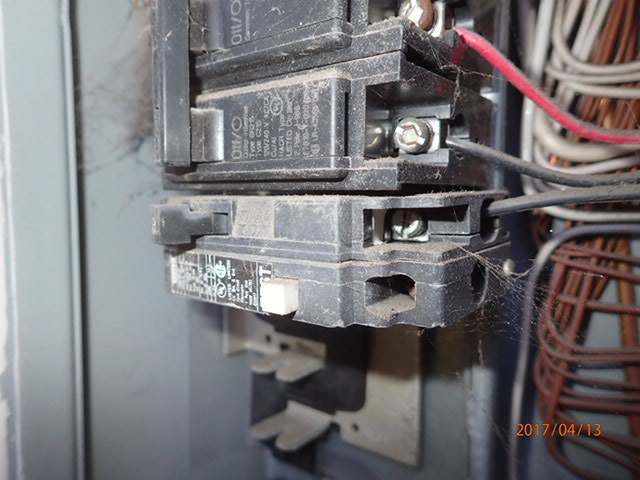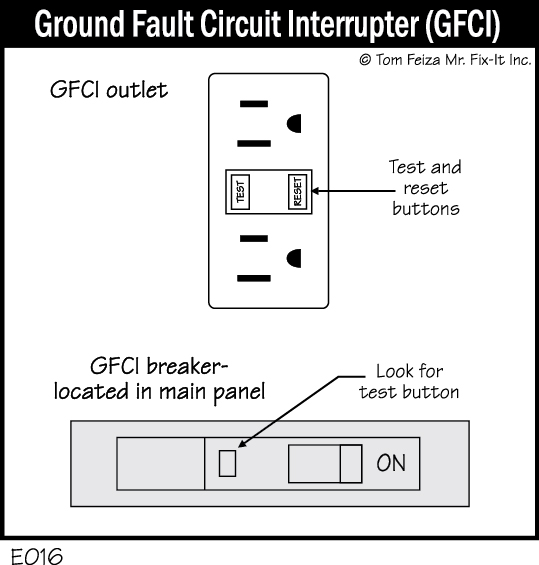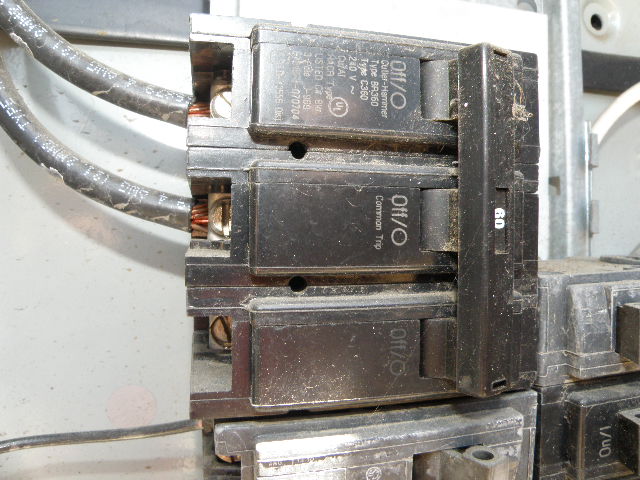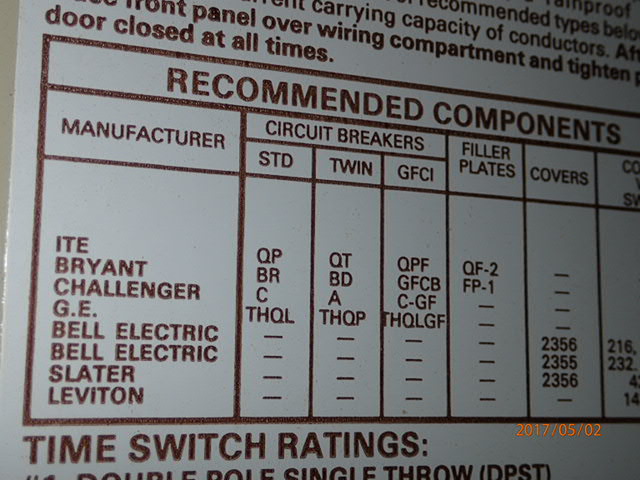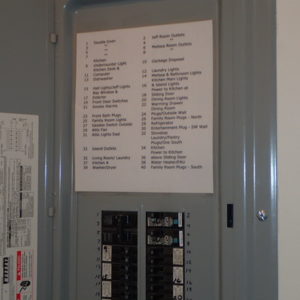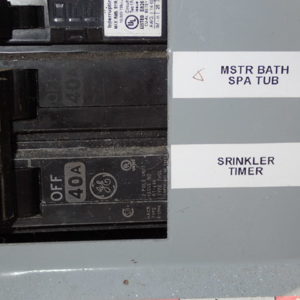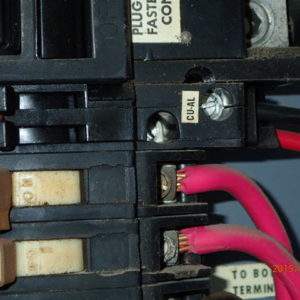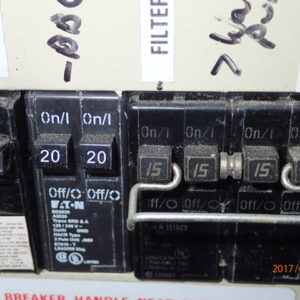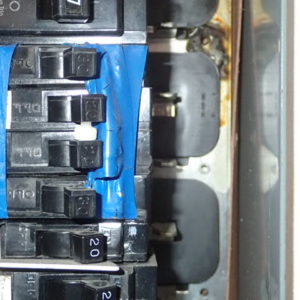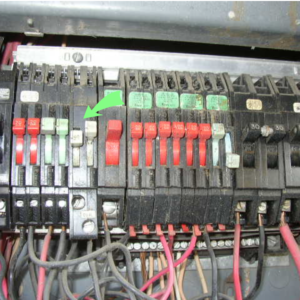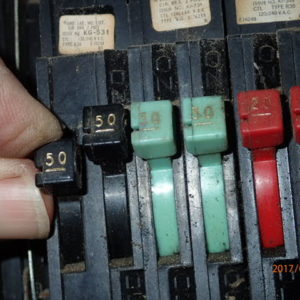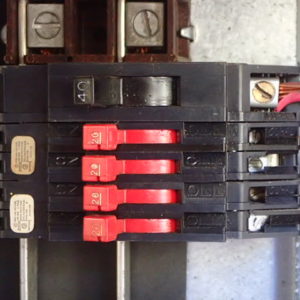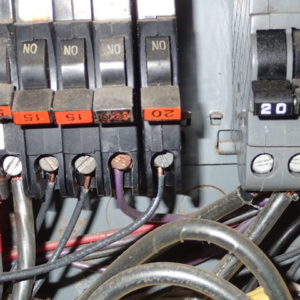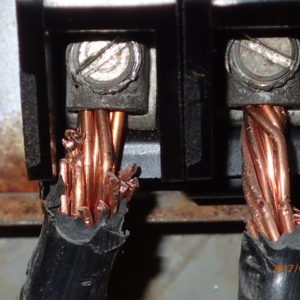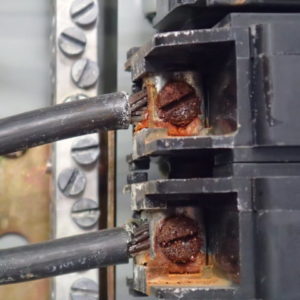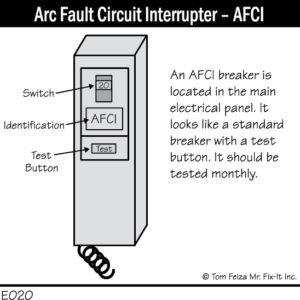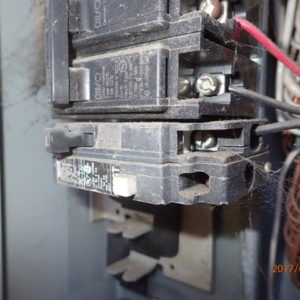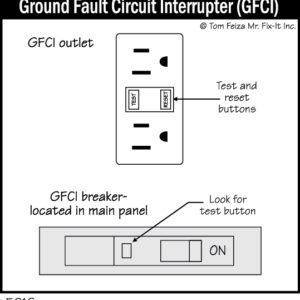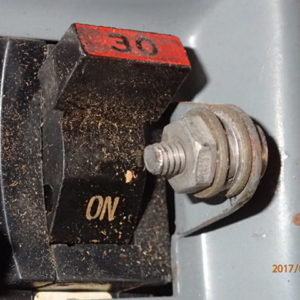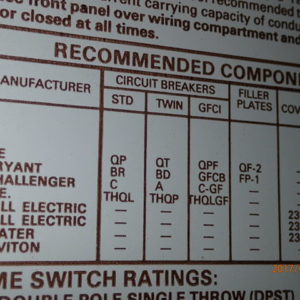Breakers are the gateway for the electric power in your house. Each breaker allows only so much electricity to go through that individual line/circuit/wire. When to much electricity is called for it turns off or “trips” the breaker to protect the wire, appliance and person.
Each breaker is designed for a certain amount of power and must be correctly matched to the size of the circuit wire. When the fire department goes out to save lives and put out a fire, they do not hook up a common drinking straw that is ¼ inch diameter, they hook up a 2 inch hose to get a lot of water for the big life-saving job. A silly example but it is simply trying to give you a good word picture and idea of correctly sizing the wires to the breakers to the appliance or job at hand.
What are the biggest appliances the take electricity in the house? The air-conditioning system runs on 240 V and is often the largest household electrical appliance and can need up to 60 amps of electricity at 240 volts. A full electric range or stovetop or double oven in the kitchen can be very large and need up to 50 Amps. Usually a separate cooktop with four cooking elements needs: 4 x 10 amps for each element (okay, the round red hot thing on the stovetop)= 40 amp breaker. A double electric oven generally also needs 40 Amps. A single electric oven generally needs 30 Amps. An electric dryer is almost always 30 Amp. Pool equipment motors can be 20 A or 15 A. That was a lot of information you may not care about that I wrote just to get started on this next example.
The thickness of the wire is called the gauge. Sorry to say, but talking about wire gauge, steel thickness gauge and a few other things that use this measurement appear to be backwards. Smaller numbers mean a thicker wire than higher numbers. The most common wire sizes in a residential structure will be 14 gauge for lights and is used up to 15 amps. (Those two numbers are close but don’t try to make any assumptions yet because the other wire numbers and rating numbers will all be different.) 12 gauge wire that is a little heavier than 14 gauge. This is used for outlets and is good up to 20 amps. 10 gauge, heavier still is used up to 30 amps. This last size will almost always be for the 30 amp dryer or single oven that need more electricity to make all of that heat. This continues up to the main panel breaker that often is 1 gauge for the “100 amp” main breaker. The wires keep on getting bigger in commercial applications and things and there will be strange words used like saying, “Double Ott”, which means wire size bigger than #1, bigger than #0 but is the size #00. Bit fat wires about the size of your thumb.
Well now we have to match the wire size – to the correct breaker size – to the work load. By that I mean what electrical item are you going to turn on in the house? Now I have seen some things that to the normal person would not raise a red warning flag but can also be dangerous. I came across a house with a 5 ton air conditioning unit using a 60 Amp breaker. The wire size was correct for the heavy equipment and so was the breaker. Someone incorrectly went to the air conditioning electrical disconnect box by the machine outside and added wiring for exterior ground lights around the patio. Why not? He already had electrical power right there next to the patio. These new smaller wires for the lights were only 14 gauge and have a maximum capacity of 15 Amps. These could easily burn up the insulation and melt if anything short-circuited because the dog chewed the wire in the flower bed. The problem would be that the 60 amp wire would never overheat from small light bulbs. The 60 amp breaker would never trip from small light bulbs. So in essence by this improper matched set up, the patio lights were not protected by a correct sized breaker! They needed to be on a separate breaker that was the correct size.
Breakers
Now let’s explain the scenario in the other direction where wire size is OK but the breaker is too small. It takes a lot of power to start that large 5 ton air conditioning unit I have been talking about. The maximum electricity that the motor might need is 60 Amps. Your unit may be the same size or smaller but every appliance has the manufactures data label attached to it with this information. So let’s say this was an old house with one extra breaker in the main panel that was 20 Amps. Mr. DIY goes to the hardware store and gets a big 6 gauge wire to handle the strong air-conditioning motor and attaches it into the breaker panel on to the small, 20 amp breaker. Almost every time somebody moves the thermostat down for air-conditioning, the breaker will trip. Why? That big motor is saying I need more power and the individual 20 amp breaker says I can only give you so much and then I will “trip” because I think I am protecting anything connected to me and will only let 20 Amps of power go through.
In this situation the wires are the correct size and safe to run the big compressor motor. It is just that the breaker is not matched to the power needs of the appliance. So matching the correct wire size to breaker to workload was supposed to be calculated throughout the property. But there are maybe 20 million houses that are over 40 years old in America and may not have another circuit to meet the requirements for a new and modern appliance that you want to install, etc. Did you just buy a new electric car and in the garage you only have one household plug and not a big 240 V outlet? This does not mean there is something wrong with the house that has been perfectly fine for the last 60 years. This means you bought something new that didn’t exist 60 years ago. Naturally these types of scenarios should be checked out by a licensed electrical contractor.
There is another very important bit of information about breakers and the electrical equipment in your home. This is about handle ties on breaker handles. A good bit of this electrical information will be tossing about the words volts and amps, but it is very important to know what is the difference between a 120 volt breaker and a 240 volt breaker. Yes, the 240 volt breaker has more power. Identifying the 240 volt circuit is what I want you to get a little understanding about. In 90% of the panels, a single breaker is going to be 120 volts. If you look up at the wires coming to your home from a telephone pole you will see three wires, two are covered with black insulation and one is bare metal. If you have underground service you will not see any wires except in your panel at the main meter and breakers.
Each of the large black wires coming from the utility company are carrying 120 volts. Two “hot” black wires of 120 volts plus 120 volts equals 240 volts. Simple so far. So as stated in the preceding paragraph, most breakers have 120 volts from the pole/utility company and when you put two breakers together with a “handle-tie” that is 240 volts. When the breakers are correctly installed that is. If both breakers are connected on the same bus bar it will not work. For two breakers to make 240 volts they need to be connected to both of the utility wires through the two sides of the panel bus bar. The internal design of electric panels has the bus bars interconnected to make putting them in easier. Some of these pictures on “Over Heating Breakers” shows how the bars zig-zag back and forth. That way two breakers next to each other can be connected together to make 240 volts. You probably should not try messing around with any breakers anyway, but this visual understanding of a 240 volt breaker and the handle ties can be life or death.
This is the important paragraph. If a 240 volt breaker does not have a handle tie, it is dangerous. Why? If your oven tries to trip off during cooking Thanksgiving dinner, one lever may pop/trip and the electric heating elements turn off as they need 240 volts. But, there may still be 120 volts still on! If only one lever tripped, 120 volts is still enough to kill you! But not enough to keep the stovetop glowing red. So if you think it is off and you touch any wiring or plug, that could be the end of you. Another similar situation could be that you are going to try cleaning leaves out of the A/C unit outside or do something at the pool pump. You tell your kid to turn off the breaker labeled, “Pool” or maybe “A/C”. Only one handle gets flipped to the off position because there was no handle tie. You can still be fried. The pictures above gave several examples of handle ties. Very important and if there is any question, call an electrician. This is one bad mistake you may not be able to recover from.
CodeBREAKER TOTALS
The total number of breakers in a panel and the value written on the lever handles often confuses people. Each individual breaker is a safety device with the capacity to only pass through so much electricity. When two hairdryers are turned on when both girls are getting ready for a party, that will possibly trip one breaker, but it does not affect the rest of the entire house. Still, in this example people will count 15 breaker handles and read the lever numbers and come up with a number that will frighten them. Let’s say there are ten 20 amp breakers and that equals 200 amps (in their mind). There are four 15 amp breakers for the lights and that equals another 60 amps. And one big breaker for the dryer that is 30 amps. Altogether that looks like 290 amps and they are frightened because the label on the panel and the main breaker are 100 amps! But in reality in modern panels it is almost impossible to trip the main breaker. If overheated and the spring gets weak, that might happen maybe after 30 or 40 years. So each individual breaker has a maximum capacity that shows on the lever handle. The overall total of the levers is allowed to add up to a number larger than the Main Breaker and panel rating.
There is supposed to be a manufacturers information label at the electric panel but these often wear off from the rain and moisture or just disappear. There are only a few conditions to be aware of about breaker placement in a panel. The manufacturer may state what size of the largest breaker that can be installed in this panel. Of course that should be followed and not put in something larger than the connecting bus bar is capable of handling without melting. It also may require a certain position in the panel. Frequently the largest breaker allowed will be the closest position to the main breaker handle. Regardless of the electrical engineering design and the specific reasons, it generally is positioned so if the power trips from the subpanel breaker, no other breakers between the sub and the main disconnect will accidentally trip. Either way, this is one area where all guys must read the instructions. And it is better yet to leave this to a licensed electrical contractor.
Double Tapped Breakers
2 wires on a breaker is wrong. It is often done. That does not make it right or any safer....


